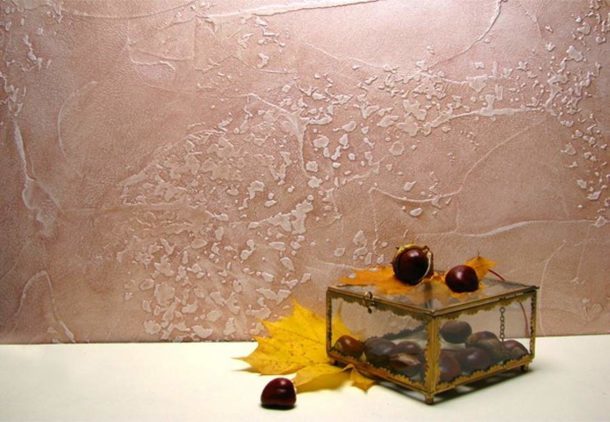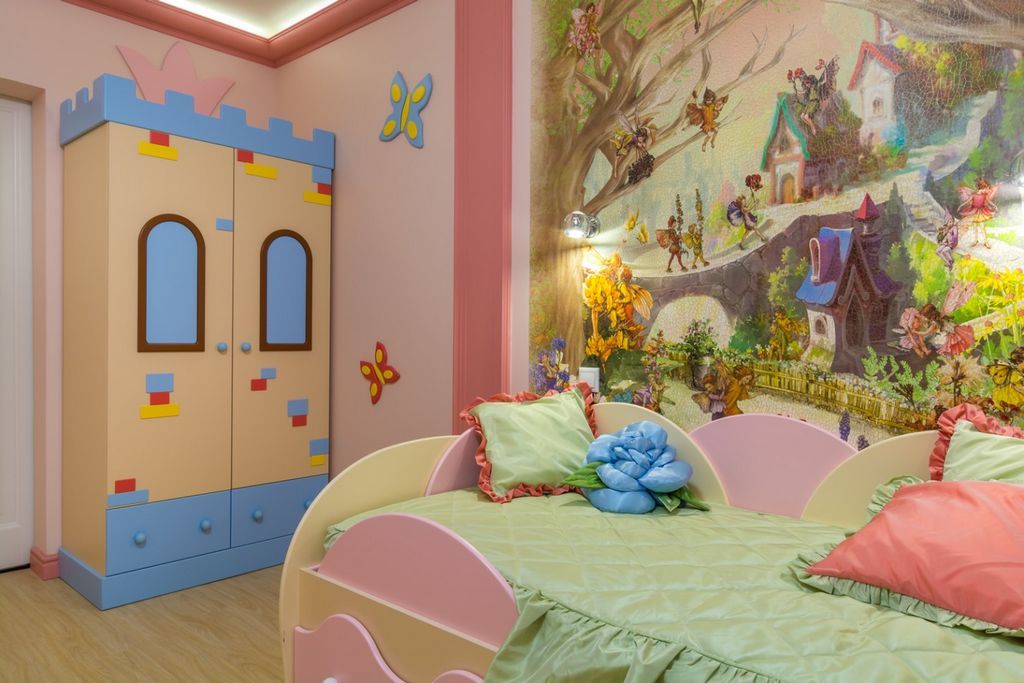Content
- Decorative stone in the interior
- Types of decorative stone
- Work with a decorative stone
Decorative stone is a facing material for external and internal decoration, which is rapidly gaining popularity. Stone decoration gives the room an original and presentable appearance and well complements the interior of different styles. Decorative stone is resistant to wear, practical and easy to care for. The only thing that can confuse you is the high cost of the material. But if you consider that it is not necessary to stone all the walls in a room with stone, then the costs will not be so great. In addition, today artificial types of decorative stone are actively used, which are much cheaper than natural breeds.

Decorative stone in the interior
Most often, this decorative facing material can be found in living rooms, spacious kitchens, dining rooms and hallways. The stone decoration of doorways, niches and entire walls allows you to achieve the effect of monumentality, and in combination with living plants brings to the room natural naturalness.

Decorating the hallway with decorative stone is practicality and convenience. A large amount of dirt accumulates in the hallway and corridor, which is brought into the apartment from the street. Artificial material imitating masonry, perfectly tolerates wet cleaning with detergents and has dirt-repellent properties. In addition, this design will be very durable and will not lose its attractive appearance from frequent touches.

Full decoration of the hallway with decorative stone can have a “crushing” effect, so a fragmented decoration with the allocation of certain areas will be the best solution:
- doorways and arches;
- viewing angles;
- areas around pieces of furniture and separately located decorative elements (lamps, paintings, mirrors);
- contact zones (hangers, racks, shelves, wall sections above the baseboard);
- protrusions and niches.

Tip: Decorative masonry can fully express itself only with good local coverage. With insufficient lighting, wall decoration with a decorative stone of dark color will look gloomy. If it is impossible to provide suitable lighting in the corridor, it is necessary to give preference to light-colored material and reduce the size of the cladding zone, limiting itself, for example, to the doorway.
USEFUL INFORMATION:Art Deco style apartment interior

Types of decorative stone
The following types of this natural material are used in decorative decoration:
- sandstone;
- limestone;
- slate;
- marble;
- granite;
- cobblestone.
With independent interior decoration, only the first two types are usually used. Sandstone lends itself well to processing and has a pleasant color palette. Limestone has great hardness, so it must be purchased in chopped form.
At present, artificial decorative material having a different composition is much more often used.
- Concrete based material. It is made of cement, sand and various additives: pigments, plasticizers, reinforcing components and natural fillers. The most common look applicable to any surface.
- Porcelain tile. Consists of clay, minerals, pigments, has high strength. It looks a little like natural rock, more like a multi-colored glass tile.
- Conglomerate. Made of marble and granite chips with the addition of quartz sand, limestone and dyes. It has increased strength and reliability, in appearance it is closest to natural stone.
- Acrylic. It has a low weight and a variety of colors, is easy to process and does not require the use of detergents when cleaning.
- Quartz. Strong and durable material, easy to use, cut with diamond blades.
- Gypsum. It has a very light weight and is easy to glue. This material resembles sandstone in appearance. The main advantage of gypsum cladding material is the possibility of its independent production using special forms.

Depending on the appearance, the following types of decorative stone are distinguished:
- rubble - imitates natural pebbles or boulders;

- chipped - it looks like raw rock;

- sawn - combines an unpolished front surface with a clear geometry;

- mosaic - elements form a specific geometric or color composition;

- tiled - has a polished front surface, is an imitation of natural polished marble or granite.
Work with a decorative stone
When choosing a decorative stone in the form of a facing material, first of all you will have the following questions:
- Is it possible to finish without the participation of a specialist?
- What tools will be needed during operation?
- How to lay a decorative stone?
- What composition can glue the facing material on the wall?
- How to decorate an arch with a decorative stone?
USEFUL INFORMATION:Mounting profiles for drywall on the walls: how to set your profile with your hands

We learn the answers to these questions and consider each in detail.
DIY stone trim
Decorating with decorative stone on our own is a very real task. Work with different types of this facing material has a different level of complexity, but in general, any novice master can cope with laying the stone.
Necessary tools
To work with decorative finishing material you will need the following set of tools:
- trowel or putty knife for applying glue;
- rubber mallet;
- grinder with a disk for concrete;
- container for kneading the solution;
- triangle ruler;
- cords for horizontal beacons;
- plumb bob;
- metal brush;
- roulette;
- level.
Glue Composition
Cladding material can be glued to the wall using tile or silicone glue, liquid nails, glue for stone. In some cases, it is permissible to use a cement-sand mortar with plasticizers or polyvinyl chloride building glue.
The best choice is tile adhesive or a specialized composition for decorative stone.

Important points
When working with stone, several nuances must be taken into account, the observance of which will ensure a high-quality result.
- Glue decorative facing material only on aligned and carefully primed the wall. It is acceptable to use for alignment plaster or drywall.
- When choosing a natural facing material with a large weight, you need to fix it to the wall reinforcing mesh.
- When covering the walls with drywall, the sheets must have a thickness of at least 12.5 mm and be fixed along the length of at least three transverse lines.
- Adhering to relatively even rows improves the appearance of the finished surface.

Sketch design and layout
Before you start gluing masonry elements, you must definitely determine the size of the area to be covered, select the type of joints, draw a sketch and mark on the walls. A sketch is necessary for the reason that it is desirable to lay a solid stone on the wall, and you need to try place so that it does not have to be cut and chopped, as these actions can lead to it damage.
USEFUL INFORMATION:How to make your own interior in the style of shabby chic?
After creating the sketch, the styling scheme must be transferred to the wall and marked using beacons. In places where a smooth line will be held, it is necessary to fix the limiters in the form of profiles or corners.
Work order
Follow the instructions below during operation.
- Before you begin to glue the stone on the wall, walk along its back with a metal brush to increase adhesion surface.
- Remove any burrs on the front with a file.
- Apply the mortar or glue to the wall with a trowel or a spatula across the width of the first row, cover the back of the stone with the composition. The adhesive layer should be 5-10 mm.
- You can stack elements end-to-end, applying them to the wall, pushing them tightly to the profile and elements of the lower row, and then fitting them with a rubber mallet.

- To form seams, you can use wedges, lay pieces of drywall between the rows for wide seams or pieces of cardboard for narrow seams. After the glue has dried, the auxiliary materials must be removed.

- Elements in a row must be placed with an offset, as when creating brickwork. This is necessary for a more natural look and increased strength.

- After laying several rows, it is advisable to take a break to prevent the array from slipping.
- Decorating the arch with decorative stone involves gluing elements not only on a vertical wall, but also on the arch. For best masonry quality, tap laid elements for possible voids. If they are found, the stone must be removed, peeled off the glue and laid again.

- Facing arches, doorways and decorating corners in an apartment often requires a stone trim. Smooth cuts look unnatural, therefore, using pliers, a knife and a file, you need to make a variety of chips that will give the stone making the opening a more natural look.

- After a few days, after finishing work, you can begin to stitch the joints, remove the wedges and fill the joints with a special grout.


EXPERT SITE
Tsugunov Anton Valerevich
Master Station Wagon
- Since 2003, I have been engaged in the repair and decoration of premises.
- Over 100 completed objects.
- I appreciate the quality, more than the quantity!
Personal page >>>
Friends!
I offer you the service "Friend Builder"
As this site develops, subscribers and visitors are turning to me more and more often asking for help with advice on various issues of repair and decoration.
Questions are sometimes asked very complex and interesting. You can’t write an article for each situation, so I decided to advise you individually.
Thanks to you, friends, a new direction of my favorite work has been born - share your experience and benefit everyone who is undergoing repairs!
Get a one-time consultation from me >>>
Order full apartment repair support >>>


